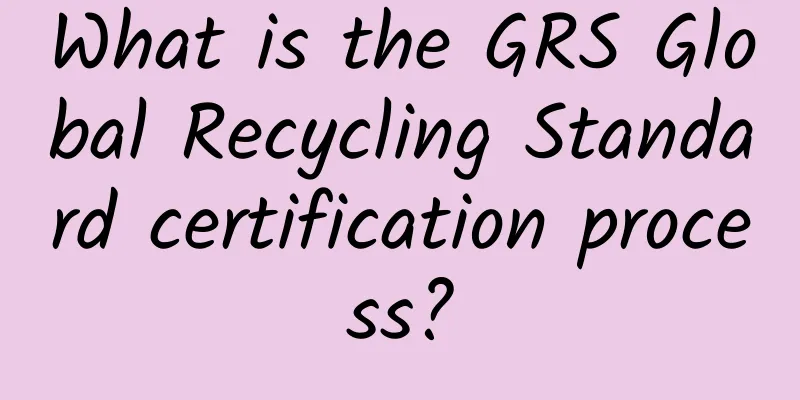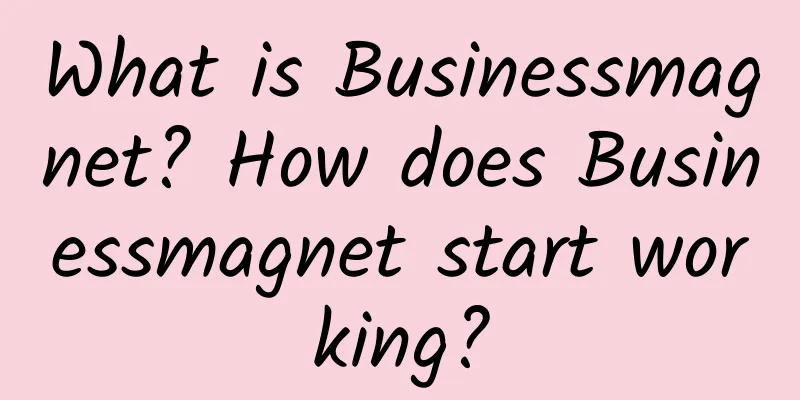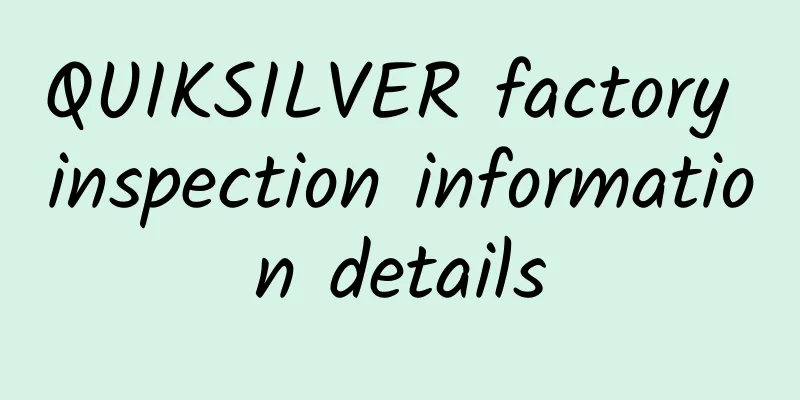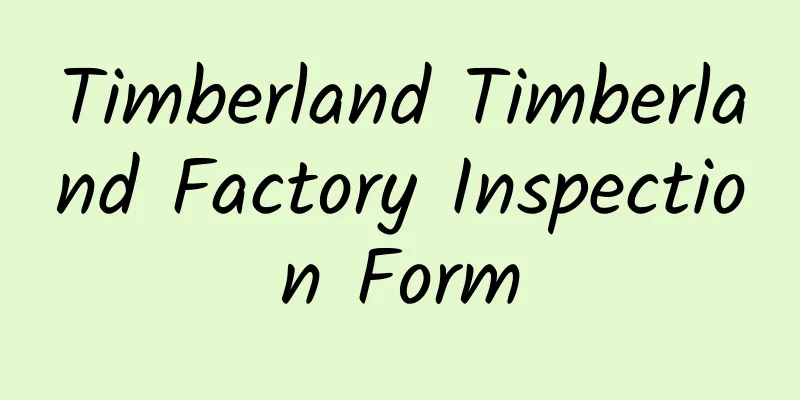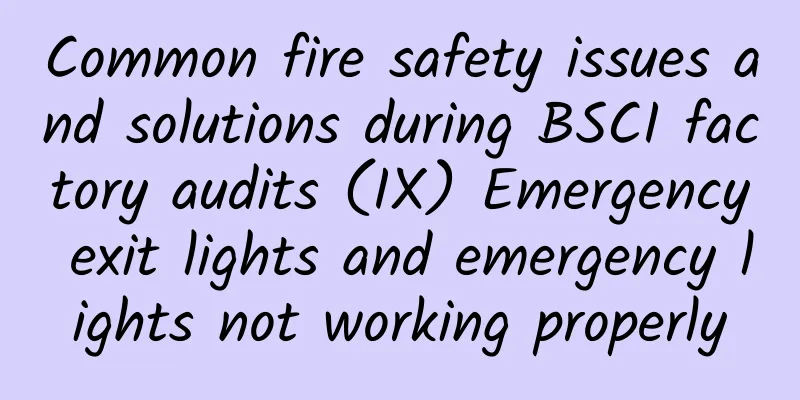National Hazardous Waste List
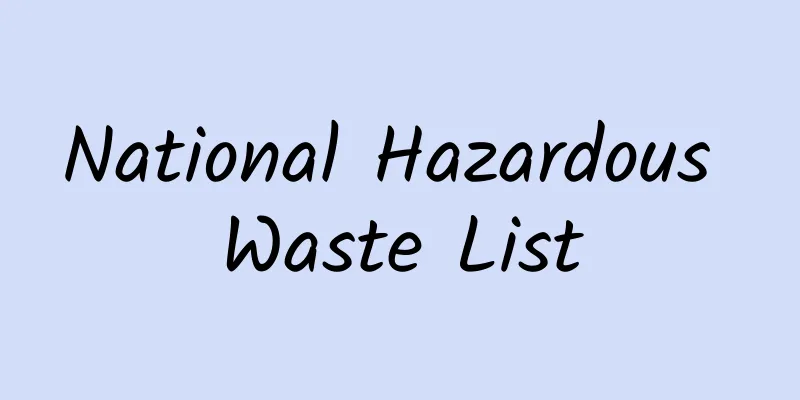
|
National Hazardous Waste List (issued by the State Environmental Protection Administration, the State Economic and Trade Commission, the Ministry of Foreign Trade and Economic Cooperation, and the Ministry of Public Security on January 4, 1998, (Implementation of the National Hazardous Waste List (Enforcement No. [1998] 089) on July 1, 1998) 1. In order to prevent environmental pollution caused by hazardous wastes, strengthen the management of hazardous wastes, protect the environment and safeguard people's health, the National List of Hazardous Wastes is formulated in accordance with the Law of the People's Republic of China on the Prevention and Control of Environmental Pollution by Solid Wastes. 2. The state has formulated the "Hazardous Waste Identification Standards". All waste categories listed in the "Catalogue" that are higher than the identification standards are hazardous wastes and are included in the scope of national hazardous waste management; those that are lower than the identification standards are not included in the national hazardous waste management. 3. For waste categories that require the formulation of hazardous waste identification standards, they can only be registered as hazardous wastes before the identification standards are promulgated. 4. The management of hazardous wastes shall be carried out in accordance with the relevant provisions on the management of hazardous wastes in the Law of the People's Republic of China on the Prevention and Control of Environmental Pollution by Solid Wastes. 5. The National List of Hazardous Wastes published this time is the first batch of the List to be implemented. With the development of economy and science and technology, the National List of Hazardous Wastes will be revised from time to time. 6. The State Environmental Protection Administration shall be responsible for the interpretation of this List. No. Waste Category Waste Source Common Hazardous Components or Waste Name HW01 Hospital clinical waste Clinical waste generated from medical services in hospitals, medical centers and clinics - surgical and dressing residues - biological culture and animal testing residues - laboratory examination residues - infectious waste - wastewater treatment sludge surgical residues, dressings, laboratory waste, infectious waste, animal testing waste HW02 Medical waste Wastes generated from the production process of medical drugs, including veterinary products (excluding Chinese medicine waste) - Distillation and reaction residues - High-concentration mother liquor and reaction base or culture medium waste - Decolorization and filtration (including carrier) materials - Used and discarded adsorbents, catalysts, solvents - Waste drugs and expired raw materials generated in production Waste antibiotics, steroids, antihistamines, analgesics, cardiovascular drugs, nervous system drugs, miscellaneous drugs, genetic waste HW03 Waste drugs, expired drugs, scrapped unlabeled and mixed drugs and medicines (excluding waste drugs in HW01 and HW02) ——Scrapped drugs generated during production (including waste drug raw materials and intermediate reactants) ——Overstocked or scrapped drugs (substances) in user units (scientific research, monitoring, schools, medical institutions, laboratories, etc.) ——Expired and scrapped drugs (objects) in the business department, waste chemical reagents, waste drugs, waste medicines HW04 Pesticide wastes Wastes generated during the production, distribution, preparation and use of insecticides, sterilizers, weed killers, rodenticides and plant growth regulators - distillation and reaction residues - production process mother liquor and (reaction tank and container) cleaning liquid - adsorption filtrate (including carriers, adsorbents, catalysts) - Wastewater treatment sludge - Expired raw materials in the production and preparation process - Expired and obsolete products in the production, sales and use process - Packaging and containers stained with pesticides and herbicides Organophosphorus insecticides, organochlorine insecticides, organic nitrogen insecticides, carbamate insecticides, pyrethroid insecticides, acaricides, organophosphorus fungicides, organochlorine fungicides, organic sulfur fungicides, organotin fungicides, organic nitrogen fungicides, quinone fungicides, inorganic fungicides, organic arsenic fungicides, carbamate herbicides, acid herbicides, phenol herbicides, amide herbicides, substituted urea herbicides, phenoxycarboxylic acid herbicides, triazine herbicides, inorganic herbicides HW05 Wastes from wood preservatives Wastes arising from the production, formulation and use of wood preservative chemicals (excluding wastes duplicated with HW04) - Wastewater treatment sludge, process reaction residues, adsorption filtrate and carriers generated in the production of production units - Wood preservative chemicals that are accumulated, scrapped or over-prepared by the user units - Wood preservative chemicals scrapped by sales and operation departments, including wastes of pentachlorophenol, phenol, 2-chlorophenol, cresol, parachlorometracresol, trichlorophenol, chrysene, tetrachlorophenol, creosote, fluorescein, benzo(a), 2,4-dimethylphenol, 2,4-dinitrophenol, benzo(b)fluorescein, benzo(a)anthracene and dibenzo(a)anthracene HW06 Organic solvent waste Wastes generated from the production, preparation and use of organic solvents (excluding waste organic solvents of category HW42) ——Reaction residues, adsorbed filtrate and carriers generated during the synthesis, cracking, separation, decolorization, catalysis, precipitation and distillation of organic solvents——Waste catalysts containing cleaning debris, cleaning strippings, reaction residues and filter residues, adsorbed and carrier wastes generated during the preparation and use of organic solvents HW07 Heat treatment waste containing cyanide Wastes from heat treatment and annealing operations containing chlorides - Metal heat treatment containing cyanide - Cooling of tempering pools for heat treatment containing cyanide - Maintenance of heat treatment furnaces containing cyanide - Heat treatment carburizing furnaces containing cyanide heat treatment barium slag, cyanide sludge and coolant, cyanide heat treatment lining, heat treatment carburizing cyanide slag HW08 Waste mineral oil Waste mineral oil that is not suitable for its original purpose - oil sludge and oil foot produced from oil extraction and refining - sediment produced during the storage of mineral oils - replacement oil and cleaning oil (sludge) of machinery, power, transportation and other equipment ——Waste oil (slag) generated during metal rolling and mechanical processing ——Waste oil and sludge generated during the treatment of oily wastewater ——Oil residue and filter media generated during oil processing and oil regeneration Waste engine oil, crude oil, hydraulic oil, vacuum pump oil, diesel, gasoline, heavy oil, kerosene, heat treatment oil, camphor oil, lubricating oil (grease), cooling oil HW09 Waste emulsions Waste emulsions and waste oil-water mixtures generated from mechanical processing, equipment cleaning, etc. - Excess emulsions (pastes) generated during production, preparation, and use ——Waste emulsifiers generated during machining, metal cutting and cold drawing ——Oil-water and hydrocarbon-water mixtures generated during cleaning of oil tanks and oil parts ——Emulsified waste liquid, waste soap liquid, emulsified oil/water, hydrocarbon/water mixtures, emulsions (pastes), cutting agents, coolants, lubricants, wire drawing agents that are regularly replaced by (emulsified) hydraulic presses HW10 Wastes containing polychlorinated biphenyls Wastes and waste products containing or contaminated with polychlorinated biphenyls (PCBs), polychlorinated terphenyls (PCTs), polybrominated biphenyls (PBBs) - surplus, abandoned, sealed, or to be replaced electrical equipment (capacitors, transformers) containing PCBs, PBBs, and PCTs - Dielectric oil, insulating oil, cooling oil and heat transfer oil dumped from power equipment containing PCBs, PBBs or PCTs - Cleaning fluid from the disassembly process of power equipment containing PCBs, PBBs and PCTs or contaminated by these substances - Soil and packaging contaminated by PCBs, PBBs and PCTs Wastes containing polychlorinated biphenyls (PCBs), polybrominated biphenyls (PBBs) and polychlorinated terphenyls (PCTs) HW11 Distillation residues Waste tarry residues from refining, distillation and any pyrolysis treatment - Tarry residues from gas production - Tarry residues from crude oil distillation - Asphalt tar and acid tar from crude oil refining - Distillation residues and still bottoms from chemical production - Tarry residues from pyrolysis of chemical production - Soil contaminated by tar or distillation residues from industrial production - Packaging and containers that have contained tarry residues Asphalt slag, tarry residue, waste acid tar, phenol residue, still bottoms, distillation bottoms, toluene residue, liquefied petroleum gas residues (containing benzo(a)pyrene, chrysene, fluoranthene, polycyclic aromatic hydrocarbons) HW12 Dye and coating wastes Wastes generated from the production, preparation and use of inks, dyes, pigments, paints, lacquers and varnishes - Waste pigments, dyes, coatings and substandard products generated in the production process - Waste mother liquors, residues and intermediates generated from chemical reactions such as nitration, oxidation, reduction, sulfonation, diazotization and halogenation in the production of dyes and pigments - Organic solvent wastes containing pigments and inks generated in the production, preparation and use of paints and inks - Sludge-like stripping materials generated by cleaning containers and equipment with acids, alkalis or organic solvents - Waste packaging containing dyes, pigments, inks and paint residues - Wastewater treatment sludge waste Acid dyes, basic dyes, mordant dyes, azo dyes, direct dyes, ice dyes, vat dyes, sulfur dyes, reactive dyes, alkyd resin coatings, acrylic resin coatings, polyurethane resin coatings, polyethylene resin coatings, epoxy resin coatings, two-component coatings, inks, heavy metal pigments HW13 Organic resin wastes Wastes generated from the production, formulation and use of resins, latex, plasticizers, glues/adhesives - unqualified products and waste by-products generated during production, formulation and use - waste catalysts and high-concentration waste liquids generated during synthesis, esterification, condensation and other reactions - kettle residues, filter media and residues generated during distillation, separation and refining - resinous and viscous debris stripped from containers and equipment using solvents or acids and alkalis for cleaning - wastewater treatment sludge containing phthalates, fatty acid dibasic esters, phosphates, epoxides, trimellitic acid esters, polyesters, chlorinated paraffins, diol and polyol esters, and sulfonic acid derivatives HW14 New chemical wastes Chemical wastes not yet identified and/or new and whose impact on humans and/or the environment is unknown, arising from research and development or teaching activities Wastes generated in the development of new chemicals HW15 Explosive wastes Defective products, waste products and explosive wastes generated in the process of producing, selling and using explosives - wastes that are unstable and prone to drastic changes without detonation - wastes that can form explosive mixtures with water - wastes that have a tendency to ignite after heating, hygroscopicity and spontaneous chemical changes - wastes that can detonate or explode when there is an initiation source or heating Contains acetyl chloride, acetyl nitrate, ammonium azide, ammonium chlorate, ammonium hexanitrocobaltate, ammonium nitrate, ammonium nitride, ammonium periodate, ammonium permanganate, ammonium picrate , ammonium tetraperoxychromate, guanidine carbonyl azide, barium azide, benzene diazonium chloride, benzotriazole, nitrosoguanidine, nitroglycerin, tetranitropentanetritol, trinitrobenzene, polyvinyl nitrate, potassium nitrate, silver azide, silver nitride, trinitrobenzene-silver metabisphenol, silver tetrazene, smokeless powder, sodium azide, sodium picrate, tetranitromethane, tetraselenium tetranitride, tetrasulfur tetranitride, tetrazene, thallium nitride, trilead dinitride, trimercury dinitride, trinitrobenzene, potassium chlorate, fulminate of mercury, fulminate of silver, trinitrotoluene, wastes of trinitroresorcinol HW16 Waste of photosensitive materials Wastes generated from the production, preparation and use of photographic chemicals and photosensitive materials - Substandard and expired products generated in the production process - Residues and wastewater sludge generated in the production process - Waste developing (fixing) solution, film and waste photographic paper generated in the use and operation activities of publishing houses, newspapers, printing houses and film studios - Waste developing (fixing) solution, film and waste photographic paper generated in the use and operation activities of social photography departments and washing departments - Waste developing (fixing) solution and film generated in X-ray and CT examinations in medical institutions Waste developing solution, fixing solution, positive and negative film, photographic paper, photosensitive raw materials and drugs HW17 Surface treatment wastes Wastes generated from the surface treatment of metals and plastics - electroplating tank slag, tank liquid and water treatment sludge in the electroplating industry - corrosive liquid, washing liquid and sludge generated by acid (alkali) washing, oil removal, rust removal and washing processes on metal and plastic surfaces - residues (liquids) and sludge generated during phosphating, polishing and chemical polishing of metal and plastic surfaces - waste liquids and residues generated during coating stripping Waste electroplating solution, plating tank sludge, electroplating water treatment sludge, surface treatment acid and alkali residue, oxidation tank residue, phosphating residue, nitrite waste residue HW18 Incineration residues Residues from industrial waste disposal operations Incineration residues and dust HW19 Wastes containing metal carbonyl compounds Wastes containing carbonyl compounds generated during the manufacture and use of metal carbonyl compounds - production of fine chemical products - synthesis of metal organic compounds Wastes containing metal carbonyl compounds (iron pentacarbonyl, dicobalt octacarbonyl, nickel carbonyl, cobalt tricarbonyl, cobalt tetracarbonyl hydroxide) HW20 Wastes containing beryllium Wastes containing beryllium and its compounds - rare metal smelting - production of beryllium compounds Wastes containing beryllium, beryllium borohydride, beryllium bromide, beryllium hydroxide, beryllium iodide, beryllium carbonate, beryllium nitrate, beryllium oxide, beryllium sulfate, beryllium fluoride, ammonium chloride, beryllium sulfide HW21 Chromium-containing wastes Wastes containing hexavalent chromium compounds - Chemical (chromium compound) production - Leather processing (tanning) industry - Metal and plastic electroplating - Acid mordant dyeing - Pigment production and use - Metal chromium smelting (alloy repair) Wastes containing chromic anhydride, (di) chromate, (di) chromate, chromic acid, dichromic acid, chromium trioxide, zinc chromate, potassium chromate, calcium chromate, silver chromate, lead chromate, barium chromate HW22 Copper-containing wastes Wastes containing copper compounds - non-ferrous metal mining and smelting - metal and plastic electroplating - copper compound production containing copper bromide (sub) , copper hydroxide, copper (sub) sulfate, copper (sub) sulfonate, copper carbonate, copper nitrate, copper sulfide, copper fluoride, sulfur |
<<: Jiangsu Province Wage Payment Regulations
>>: The Latest Walmart Factory Audit Ethics Standards
Recommend
HM factory audit procedures
HM factory audit procedures Page 1 of 1 Hallmark ...
Craigslist - "The Big Free Classifieds Site"
Craigslist is a large-scale free classified adver...
Cross-border e-commerce has become a new engine for Tianjin's foreign trade development
At present, cross-border e-commerce has become a ...
About A&F
A&F (Abercrombie & Fitch) Brand Introduct...
Special training session in Ningbo and Ninghai was carried out smoothly
Ningbo Ninghai special training was successfully ...
What are eBay Promoted Listings? What does eBay Promoted Listings do?
What are eBay Promoted Listings? Promoted Listing...
McDonalds actively explores ways to increase performance
After the fast-food chicken incident some time ag...
SEDEX Associate Auditor List
Africa Now ALGI Bureau Veritas CSCC SGS Wieta WRA...
What is CmiA African cotton certification? What does the certification mean?
1. What is CmiA African Cotton Certification? &qu...
When recycling scrap tires, should we choose ISCC EU or ISCC PLUS certification?
In ISCC, the use of scrap tires is defined as fol...
Common electrical safety issues and solutions during BSCI factory audits (VII) Exposed wires 1
Problem phenomenon: Wires are exposed. Solution: A...
Indian fashion retail brand Clovia completes $10 million Series C financing
On January 28, Economic Times reported that Clovi...
Useful Information | What are some good operational ideas for eBay?
For sellers who have just started selling on eBay...
What is Asia.ru? What are the benefits of Asia.ru membership? What do I need to prepare to join Asia.ru?
What is Asia.ru? Asia.ru is a Russian B2B e-comme...
Where should I start planning my eBay store operations? (Part 2)
eBay store operation is the key to whether eBay s...




